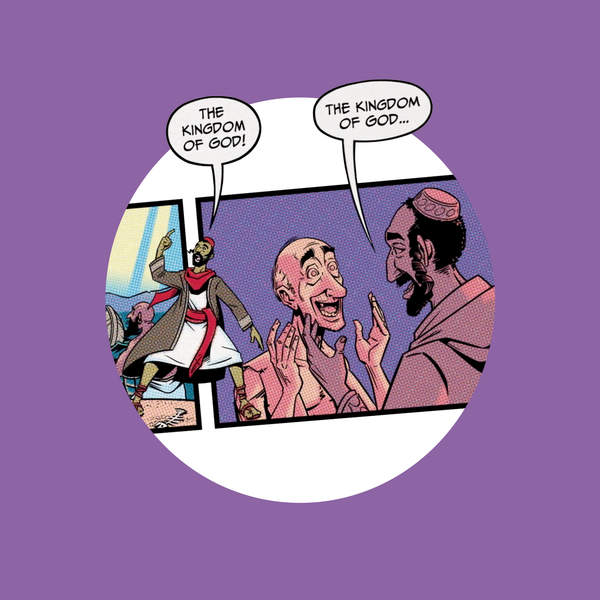
The Thunder of God
This is episode 1 in our series on Biblical Poetry!
The Thunder of God
--:--
Episode Chapters
Show Notes
This is episode 1 in our series on Biblical Poetry! In part 1 (0-4:43), the guys discuss the fact that about one third of the modern biblical text is poetry. But what exactly is poetry? Tim explains that every culture has its own definition of poetry. Tim prefers this definition from Laurence Perrine: “Poetry is a kind of human language that says more, and says it more intensely than does ordinary language.” (Laurence Perrine, Sound and Sense: An Introduction to Poetry)
Produced By:
Dan Gummel, Jon Collins
Scripture References
Referenced Resources
- In part 3 (27:00-35:30), the guys discuss the use of cadence, metaphor, and meter in poetry. This varies from culture to culture. The guys note that rhyming and syllable structure allows a person to memorize the lines more easily. Additionally, Tim says that a core concept is that poetry always carries an overabundance of meaning. The limited use of words expands the meaning of them.
- In part 4 (35:30-54:25), Tim and Jon discuss that the ancient Israelite poetry preserved for us in the Bible doesn’t fit any kind of master “system” like meter (though some think so). However, the Israelites were aware of a certain kind of speech that was poetic, dense, and distinct from normal speech. They even have vocabulary for it.
- “Song” (Heb. shir / shirah): Exodus 15:1, “Then Moses and the Israelites sang this song…"
- “Psalm” (Heb. mizmor): Many headings to the Psalms have these: Psalm 3, “A mizmor of David.”
- “Lament” (Heb. qinah): 2 Samuel 1:17, “David lamented this qinah over Saul and Jonathan.”
- There are three keys to reading Hebrew poetry:
- 1. Rhythm: Hebrew poetry is shaped into a “line-rhythm” or “verse.” It is not metrical (based on syllable counts), but a form of “free verse.”
- The line in Hebrew poetry is most often:
- a. A complete sentence or subordinate clause
- b. Consisting of 3-5 words
- c. Marked by repetition and clear end-stop signals
- The Dead Sea Scrolls show the earliest divisions of Hebrew poetry into line-columns.
- 1. Terseness:
- This poetry is often concise and uses as few words as possible to communicate as much as possible.
- “The terseness of biblical poetry gives the impression that each word or phrase is more loaded with meaning, since fewer words must bear the burden of the message.” (Adele Berlin, Introduction to Biblical Poetry)
- 2. Parallelism:
- Robert Lowth's Lectures on the Sacred Poetry of the Hebrews and a commentary on Isaiah created the first comprehensive synthesis of features in Biblical poetry. In his words:
- “There is a certain conformation of the sentences, which is chiefly observable in those passages which frequently occur in Hebrew poetry, in which they treat one subject in many different ways, and dwell upon the same sentiment; when they express the same thing in different words, or different things in a similar form of words: and since this artifice of composition seldom fails to produce an agreeable and measured cadence, we can scarcely doubt it must have imparted to their poetry an exquisite degree of beauty and grace.”
- In part 5 (54:25-59:24), Jon asks whether or not more people should make an effort to learn to read and understand Hebrew. He says he feels discouraged. Why would God hide himself in a language that is so hard to understand and takes so much effort to learn? Tim says that every serious community of Bible followers should have someone in it who’s committed to studying the scriptures in their Hebrew form.
- In part 6 (59:24-end), the guys continue to discuss parallelism in Hebrew poetry.
- All the Proverbs are cast in this poetic form. In fact, the word “proverb” in Hebrew (mashal) means “a comparison.” In Proverbs 16:32, both lines are positive, “better than” sayings.
- 1. Being slow to anger is better than being a warrior,
- 2. And being one who rules their passions is better than one who captures a city.
Check out Tim's library here. You can experience our entire library of resources in the BibleProject app, available for Android and iOS.

